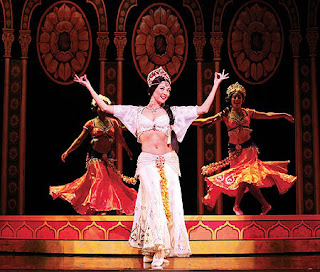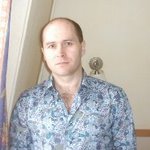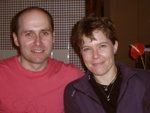
To say I grew up liking Indian music would be an out and out lie. In fact I hated it. Sunday mornings when I was very small I would get out of bed and hope that Hammy The Hamster or Andy Pandy would be on television only to be faced by a be-saried Lady standing in a small circle singing “Nai Zindagi Naya Jeevan” – the opening music to a TV show which ran from 1968 – 1982. My Urdu fails me so I can’t tell you what the song means! As a four year old yearning for Teddy and Looby Loo this was a major bone of contention - as you could imagine.
Despite the large Indian population in this country, Indian music never really took hold as I was growing up. It was so alien to the music we were all used to, I guess, that we didn’t particularly warm to it for a good few years. Of course these days “World Music” influences all kind of things so it does get into the mainstream from time to time.
It was over a decade ago that Andrew Lloyd Webber succumbed to the charms of Indian music in general and Bollywood in particular as he found himself lured from his kitchen to the television where Channel 4 was screening a series called “Movie Mahal”. The exotic music and dancing really grabbed his attention, and after talking to film director Shekhar Kapur the seeds were sown for a brand new show. As he investigated these Asiatic spectaculars he discovered that all the best songs seemed to come from the pen of the legendary A. R. Rahman, so when in due course the time came to develop the idea for a fully fledged musical it was to Rahman he turned as composer and it was full steam ahead for a spectacular new production!
My own interest in Indian music comes from a very different angle. As I was growing up my father wasn’t really in my life. When I was quite small he left and headed east. His travels lead him to the Indian city of Benares, on the banks of the Ganges, and it was there that he began to study classical music. Indian classical music. Under the guidance of a guru he studied Indian percussion as he learnt Tabla for the next seven years. Unlike western music, to learn a musical instrument in India you need to undergo a spiritual journey – hence the seven years of study. He began performing in his later years in Benares and continued when he moved to Kathmandu in the eighties. The end of the decade saw him return to Europe where our paths crossed again in Germany - the country of his birth. I remember him talking a lot about learning tabla and explaining that they are two drums – one large flat drum made of metal and the main smaller one made of wood and at an angle. His hands moved across them with incredible dexterity creating a whole range of different sounds. At this point he was involved in two musical projects “Eastwind” and “Threeo”. Both projects melded Indian classical music with western sounds and, in the latter case, Jazz. In the last ten years or so this kind of music has flourished under the umbrella of “World Music” and particularly “Fusion”. Sadly my father died before this new found popularity. It would have been interesting to have known what would have happened with his music if he had lived but that was not to be. It was a good ten years after his death before I played the tapes of his music. Surprisingly, although I hadn’t appreciated the music in his lifetime, I found I quite liked it. It’s great to listen to when I need a calming influence. Good chill out music if you will.
So back to the West End where “Bombay Dreams” opened at the Apollo Victoria in 2002 and enjoyed a two year run. The story tells of slum dweller Akaash who has dreams of becoming a movie star and Priya, a director’s daughter, who he falls in love with. As its setting the show uses Mumbai (the former Bombay) which like many Asian countries has abject poverty sitting alongside incredible wealth, so providing two contrasting locales for the story. The musical is a successful hybrid of both “Bollywood” and Western musicals, touching on various elements of Indian life - even the caste system. It’s uber-glamorous staging was a triumphant tribute to the Bollywood spectaculars that are much enjoyed by our Indian community. The colourful kitsch staging even included fountains that sprang from the stage showering the performers as they sang one of the shows numbers. Not camp at all! Alongside A.R.Rahman, the Oscar winning Don Black penned the lyrics of songs that included the gorgeous “The Journey Home” and the romantic “How Many Stars?,” not to mention the energetic hit single “Shakalaka Baby” conjuring up a successful fusion of Asia and the West End.
The show had been on for well over a year before I went to see it, and it turned out to be one of those “almost cried” experiences that I mentioned in my last column. All in all I loved “Bombay Dreams” – I couldn’t believe I had waited so long to see the show. I loved the score, which although a world away in many ways, allowed me to hear many of the sounds I had heard in my father’s music. The staging was a delight and I really couldn’t fault the performances. However the aspect of the show that moved me most was something quite subtle. For there on the side of the stage of the Apollo Victoria sat a musician. Playing tabla.
Recordings
The cast album is available and is good fun. To my ear though it’s more of a pop recreation of the score than the show I actually experienced – but it contains some great songs none the less. I am only aware of one cover version of a song from the show. I am sure there must be more, but Sarah Brightman performs an effective version of “The Journey Home” on her “Harem” collection.
For more information on “Bombay dreams” check out
http://www.reallyuseful.com/rug/shows/bombaydreams/
Despite the large Indian population in this country, Indian music never really took hold as I was growing up. It was so alien to the music we were all used to, I guess, that we didn’t particularly warm to it for a good few years. Of course these days “World Music” influences all kind of things so it does get into the mainstream from time to time.
It was over a decade ago that Andrew Lloyd Webber succumbed to the charms of Indian music in general and Bollywood in particular as he found himself lured from his kitchen to the television where Channel 4 was screening a series called “Movie Mahal”. The exotic music and dancing really grabbed his attention, and after talking to film director Shekhar Kapur the seeds were sown for a brand new show. As he investigated these Asiatic spectaculars he discovered that all the best songs seemed to come from the pen of the legendary A. R. Rahman, so when in due course the time came to develop the idea for a fully fledged musical it was to Rahman he turned as composer and it was full steam ahead for a spectacular new production!
My own interest in Indian music comes from a very different angle. As I was growing up my father wasn’t really in my life. When I was quite small he left and headed east. His travels lead him to the Indian city of Benares, on the banks of the Ganges, and it was there that he began to study classical music. Indian classical music. Under the guidance of a guru he studied Indian percussion as he learnt Tabla for the next seven years. Unlike western music, to learn a musical instrument in India you need to undergo a spiritual journey – hence the seven years of study. He began performing in his later years in Benares and continued when he moved to Kathmandu in the eighties. The end of the decade saw him return to Europe where our paths crossed again in Germany - the country of his birth. I remember him talking a lot about learning tabla and explaining that they are two drums – one large flat drum made of metal and the main smaller one made of wood and at an angle. His hands moved across them with incredible dexterity creating a whole range of different sounds. At this point he was involved in two musical projects “Eastwind” and “Threeo”. Both projects melded Indian classical music with western sounds and, in the latter case, Jazz. In the last ten years or so this kind of music has flourished under the umbrella of “World Music” and particularly “Fusion”. Sadly my father died before this new found popularity. It would have been interesting to have known what would have happened with his music if he had lived but that was not to be. It was a good ten years after his death before I played the tapes of his music. Surprisingly, although I hadn’t appreciated the music in his lifetime, I found I quite liked it. It’s great to listen to when I need a calming influence. Good chill out music if you will.
So back to the West End where “Bombay Dreams” opened at the Apollo Victoria in 2002 and enjoyed a two year run. The story tells of slum dweller Akaash who has dreams of becoming a movie star and Priya, a director’s daughter, who he falls in love with. As its setting the show uses Mumbai (the former Bombay) which like many Asian countries has abject poverty sitting alongside incredible wealth, so providing two contrasting locales for the story. The musical is a successful hybrid of both “Bollywood” and Western musicals, touching on various elements of Indian life - even the caste system. It’s uber-glamorous staging was a triumphant tribute to the Bollywood spectaculars that are much enjoyed by our Indian community. The colourful kitsch staging even included fountains that sprang from the stage showering the performers as they sang one of the shows numbers. Not camp at all! Alongside A.R.Rahman, the Oscar winning Don Black penned the lyrics of songs that included the gorgeous “The Journey Home” and the romantic “How Many Stars?,” not to mention the energetic hit single “Shakalaka Baby” conjuring up a successful fusion of Asia and the West End.
The show had been on for well over a year before I went to see it, and it turned out to be one of those “almost cried” experiences that I mentioned in my last column. All in all I loved “Bombay Dreams” – I couldn’t believe I had waited so long to see the show. I loved the score, which although a world away in many ways, allowed me to hear many of the sounds I had heard in my father’s music. The staging was a delight and I really couldn’t fault the performances. However the aspect of the show that moved me most was something quite subtle. For there on the side of the stage of the Apollo Victoria sat a musician. Playing tabla.
Recordings
The cast album is available and is good fun. To my ear though it’s more of a pop recreation of the score than the show I actually experienced – but it contains some great songs none the less. I am only aware of one cover version of a song from the show. I am sure there must be more, but Sarah Brightman performs an effective version of “The Journey Home” on her “Harem” collection.
For more information on “Bombay dreams” check out
http://www.reallyuseful.com/rug/shows/bombaydreams/



No comments:
Post a Comment